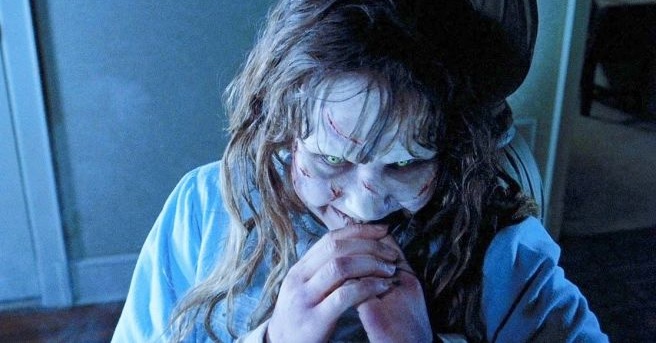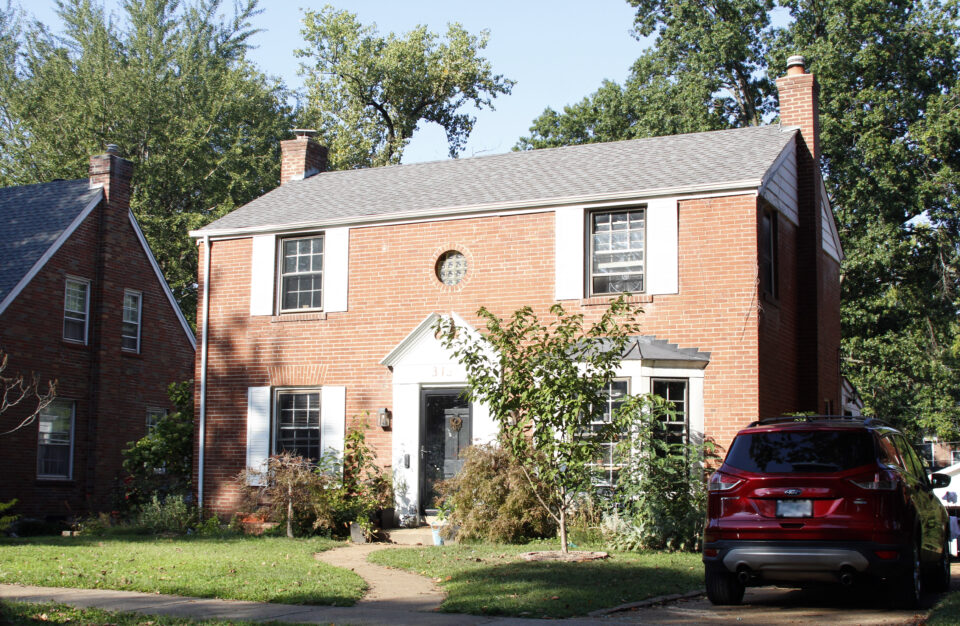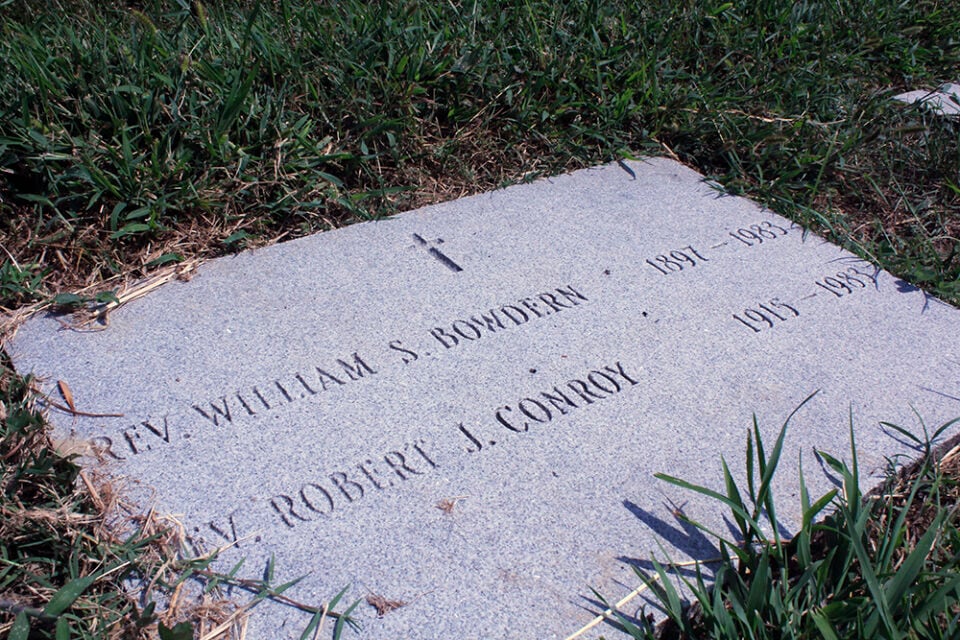The Real-Life Case That Inspired ‘The Exorcist’ Is Even More Remarkable Than Fiction

It started with a scratching sound under the floorboards in a young boy’s home. Then, it ended up on movie screens all over the world.
The real-life case of Ronald Hunkeler, a Maryland boy who underwent a harrowing exorcism in 1949, served as the inspiration for Willam Peter Blatty’s bestselling novel The Exorcist and the iconic William Friedkin 1973 film of the same name. The cinematic storyline continues half a century later with David Gordon Green’s The Exorcist: Believer.

But the tale that inspired The Exorcist franchise is even more fascinating, and in many ways more terrifying, than what has scared audiences for decades. There are very few reliable records of what happened. But thanks to the diary of one of the priests involved and the tireless research of historians such as Troy Taylor, we know many of the chilling details.
“I find that the stuff that everyone swears really happened is so much more compelling than the stories that got made up,” said Taylor, whose book The Devil Came to St. Louis tells a detailed account of Hunkeler’s story.
Messages etched in flesh
Ronald (Ronnie) Hunkeler was 13 years old on January 15, 1949, when he and his grandmother heard an unexplained dripping noise in the Hunkelers’ Cottage City, Maryland house. Those sounds later became scratching noises under the floorboards. At first, the Hunkelers assumed the sounds came from a rodent. But when an exterminator couldn’t find anything and the noise continued for 10 days, it was clear that something strange was happening.
Then Ronnie’s mattress started shaking. Scratches started appearing on his body. Other furniture started moving when the boy was around.

Ronnie’s mother Odell, who was originally from St. Louis, wanted to get him away from whatever was manifesting in the Cottage City house. By the end of February, the scratches on Ronnie’s body were spelling out words, seemingly in response to the family’s thoughts. When Odell was considering taking Ronnie to St. Louis, the scratches spelled out “Louis” on the boy’s ribs. When the family was considering sending Ronnie to school, the word “No” appeared on his wrists.
Odell took Ronnie to the small city of Bel-Nor in North St. Louis County, Missouri, in early March to stay with her sister and her husband. It was immediately clear that whatever was haunting Ronnie made the trip halfway across the country with the boy. On March 7, five or six relatives witnessed Ronnie’s bed moving.
Ronnie’s cousin was a student at Saint Louis University, a Jesuit institution, and was taking a class with Father Raymond J. Bishop. The cousin approached Father Bishop about Ronnie’s situation, and after consulting with the president of the university, Bishop decided to come and pray with Ronnie. Bishop began taking notes. Those notes became what is generally referred to as The Exorcist’s Diary, which serves as the most detailed account of the terrifying ordeal.
March 9 was the first time Bishop visited the Bel-Nor house. He wrote that he witnessed Ronnie’s mattress move and saw scratches appear on Ronnie’s stomach. Bishop wrote that it appeared the scratches were made by claws. He was careful to note that in many cases, there were multiple witnesses to the strange happenings with Ronnie. In fact, he noted a total of 14 people bore witness to the events in St. Louis.

The next day, Bishop sought advice from a friend of his, 52-year-old Father William S. Bowdern. Bowdern was the pastor of the St. Francis Xavier Church in St. Louis and was a trusted and experienced priest. He eventually took the lead in the case and would become the inspiration for the fictional Father Lankester Merrin of The Exorcist book and movie.
Bowdern came with Bishop to the Bel-Nor house the night of Friday, March 11. After a few days of observing furniture moving and unexplained scratching noises in Ronnie’s bedroom, Bowdern was able to receive permission on March 16 from Archbishop Joseph Ritter to perform an exorcism.
‘Truly diabolical’
The exorcism began in earnest that day, March 16, and continued until April 18. The Hunkelers tried different locations, including a trip back to Maryland for a few days and a long stay at the Alexian Brothers Hospital in St. Louis.
Bishop documented it in his diary, using simply an “R” to protect Ronnie’s name. Many passages are shocking, including the following:
- March 16: “The most distinctive markings on the body were the picture of the devil on R’s right leg and the word ‘HELL’ imprinted on R’s chest in such a way that R could look down upon his chest and read the letters plainly.”
- March 17: “R spit directly in the faces of his father and mother and his uncle. His eyes were shut tight, but he was able to aim well in that he was spitting during the tantrums, nor did he know he was fighting with those who held him.”
- March 19: “Violent shouting with fiendish laughter were a part of the phenomena. The shouting resembled the barking of a dog, and the snapping of R’s teeth was truly diabolical.”
- April 3: “One new feature of this evening was a kind of devilish prophecy concerning R’s little cousin [NAME REDACTED]. Shouting and singing in rhythm, R repeated over and over for about ten minutes, ‘You will die tonight. You will die tonight.’”
- April 7: “…at least twenty brands appeared on R’s body. …One set of such claw marks from thigh to ankle tearing off a scab near the ankle.”
- April 17 (Easter Sunday): “The (entity) showed his power again by saying that he would have R awaken and ask for a knife. He had threatened to kill those who molested him while in his seizure. When R came out of the spell, he asked for a knife so that he might cut an Easter egg.”
After weeks of harrowing terrors, the ordeal finally came to an end the day after Easter, on April 18. As Ronnie went in and out of his spells that day, he told the priests that he felt that he was in a tunnel and that every time he went into a spell, he saw more light at the end of the tunnel. During Ronnie’s final spell, he spoke in an unexpected and “commanding” voice, Bishop wrote.
“I am Saint Michael,” Ronnie said, “and I command you, Satan, and the other evil spirits to leave the body in the name of Dominus, immediately.”
Ronnie then broke into what Bishop described as “the most violent contortions of the entire period of exorcism.” After a few minutes, Ronnie snapped out of it and said, “He’s gone.”
Ronnie then explained what he saw. He said he saw a man in a white robe. This man held up a fiery sword with one hand and pointed down to a cave with the other. Ronnie said he saw the devil standing in the cave, and he saw flames and felt heat emanating from the cave. The figure in the robe smiled at Ronnie and said just one word: “Dominus,” the Latin word for Lord.
At this, the devil and a group of what Ronnie described as the devil’s helpers ran into the fiery cave and disappeared. The word “spite” appeared at the opening of the cave. Ronnie felt a tugging in his stomach as the devil ran. Then he felt a snapping in his stomach. He woke up from the experience feeling more relaxed than he’d felt since January.
Just like that, it was over.
At the end of Bishop’s diary, there are two dates long after the exorcism checking in on Ronnie. One, in August 1951, describes the 16-year-old Ronnie as “a fine young man.” Another, in November 1970, is heavily redacted but appears to say that Ronnie was living with an unlisted phone number.
How the story reached the big screen
In August 1949, Reverend Luther Schulze, who had been involved in the early stages of Ronnie’s ordeal, told a meeting of the Washington, D.C. branch of the Society of Parapsychology about what he had seen. A Washington Post reporter happened to be at the meeting and wrote a brief article for the next day’s edition.
Other reporters dug into the events described in the article. A Post story on August 20, 1949, offered a more complete (though not totally accurate) version of the story. This is the article that William Peter Blatty, then a junior at Georgetown University, read. The story stuck with him over the years, and he eventually even tracked Bowdern down. Blatty spoke to him about the possibility of writing a fictionalized version of the exorcism. Blatty never had access to Bishop’s diary.
Bowdern was sworn to secrecy, but spoke to Blatty in general terms. In his research, Taylor was able to track down correspondence between the two men where Bowdern requested that Blatty fictionalize some of the events to protect Ronnie’s identity. As a result, Blatty made the child at the heart of his book a girl instead of a boy. He also located her in Georgetown instead of St. Louis. The Exorcist novel came out in 1971 and the movie followed two years later.

Ronnie’s legacy
As the details of his life were being broadcast to the world, Ronnie built a distinguished and remarkable career. According to Taylor’s research, Ronnie worked at NASA and patented the substance used on space vehicles that allows them to re-enter Earth’s atmosphere. He continued to live in Maryland until his death in 2020.
Taylor spoke with Ronnie just one time, in 2004. Ronnie said he had almost no memory of the events. He also never read The Exorcist or saw the film.
Almost nothing remains from the exorcism. Nobody who was involved in the case is living, and even most of the buildings—the Alexian Brothers Hospital and the original St. Francis Xavier Church in St. Louis—have been torn down. Most of the copies of Bishop’s diary were kept secret until one was discovered by accident. When part of the Alexian Brothers Hospital was being torn down in 1978, two workers found a copy of the diary in a desk drawer as they were cleaning out a room. Someone ended up making a copy of it and circulating it, which is now available online.

Though Bishop and Bowdern were sworn to secrecy about the case, it’s clear that they wanted to get the word out about what they viewed as proof of the devil’s existence. The Exorcist book and films, along with Taylor’s research, have brought much of it to light.
“They wanted that story to be told because they felt it was important for the world to know that there was evil in the world,” Taylor said. “I don’t think my plans are all that grandiose. I just like to get the story out that strange things do happen that aren’t easily explained.”
Categorized:News

